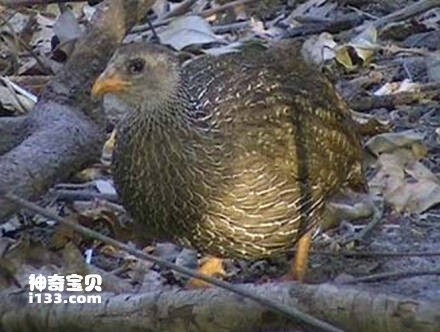Pternistis ahantensis
IUCN
LCBasic Information
Scientific classification
- name:Pternistis ahantensis
- Scientific Name:Pternistis ahantensis,Ahanta Francolin
- Outline:Landfowl
- Family:Chickeniformes Pheasants Polytridges
Vital signs
- length:33-35cm
- Weight:487-608g
- lifetime:No textual research information is available
Feature
The chest and abdomen feathers are black and white, and the cheeks are bare and hairless
Distribution and Habitat
It is found in Benin, Cote d 'Ivoire, Gambia, Ghana, Guinea, Guinea-Bissau, Liberia, Mali, Nigeria, Senegal, Sierra Leone and Togo.
Appearance
Partridge brown top is 33-35 cm long; The male weighs 608 grams and the female 487 grams. The tip of the reddish-brown wing has a variation. There is no geographical overlap with superficially similar species. Male and female color, the difference is not big. The feather color is relatively dim, and the body feathers are generally composed of gray, light gray, black and white. The chest and abdomen feathers are thin black and white stripes. The cheeks are bare and hairless. The mouth is short and strong, perfect for digging at the base of grass and root balls. The nostrils were not concealed by feathers. Wings slightly rounded. The tail is short, the tail feathers are flat, and the broad tail has fourteen identical feathers. Calcined, upper tarsus only feathered, toe completely bare.
Details
The brown top coloured partridge (Pternistis ahantensis) is known as Ahanta Francolin and has two subspecies.

Listed on the International Union for Conservation of Nature (IUCN) 2016 Red List of Threatened Species ver 3.1 - Not Threatened (LC).
Protect wild animals and eliminate wild meat.
Maintaining ecological balance is everyone's responsibility!








